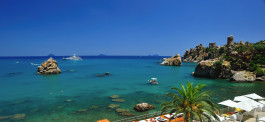
We set out to see Sicily not as tourists, but as curious travelers - trying, tasting, and talking our way across the island. The result is not a “top 10” list, but rather a story of impressions and encounters. Still, for those who want to follow in our footsteps, we’ve included a downloadable guide with all addresses at the end.
We began in Palermo, the island’s restless capital: layered, unpredictable, and alive at every corner. It’s a city that never softens itself for visitors: one moment opera, the next moment chaos, always demanding you pay attention.
Our first stop was Teatro Massimo. One of Europe’s great opera houses, it has long been Palermo’s stage to the world - from grand premieres to unforgettable film moments, from The Godfather Part III to Wim Wenders. It felt like the right doorway into our journey: a building where history, imagination, and spectacle converge.
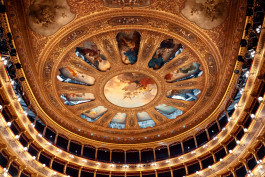
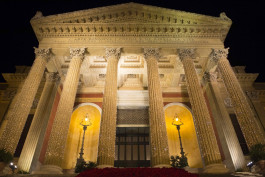
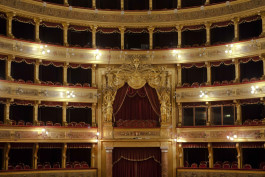
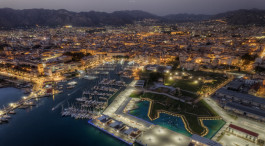

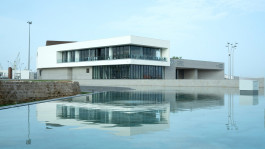
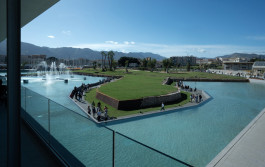
Step outside, and Palermo shifts again: into the riot of Ballarò market. The air is thick with frying panelle and golden arancini, grilled sardines and swordfish sizzling on coals, piles of violet aubergines, artichokes, and bright blood oranges stacked high. Vendors sing out their offers in dialect, competing with the crackle of oil and the fragrance of mint, fennel, and roasted peppers. Smoke rises from open grills with sardines, swordfish, and for the adventurous - skewers of stigghiola, while counters glisten with octopus salads brightened by lemon and oil. This is Palermo at its most alive - a place where you eat with all five senses at once.
Down at the port, Palermo shows its modern side. The trapezoidal pier, designed by architect Sebastiano Provenzano, is a symbol of renewal. Once an industrial edge, it has been opened up as a place to walk, breathe in the sea air, and see the city from a new perspective.
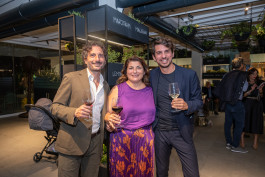
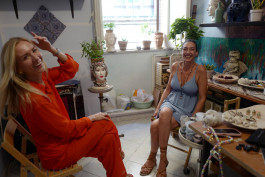
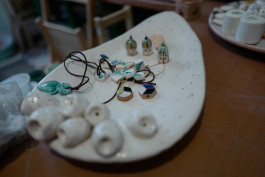
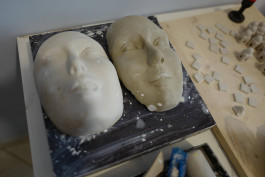
Here you’ll find Porto di Costanza, the latest project of the Costanza Filiera del Gusto collective. More than a restaurant, it’s a food philosophy: Sicilian products reimagined, paired with thoughtful wines, in a space that feels like part of the city’s rebirth. The menu changes with the rhythm of the sea and the market, highlighting small producers and forgotten traditions. It’s a place where you can taste Palermo’s future without losing its past - contemporary in style, but deeply rooted in territory. Sitting at one of the waterfront tables, with ships moving slowly behind you, you feel both in the middle of the city and at the edge of the world.
Palermo is also about hidden corners. In Sperone, a working-class neighborhood, murals have turned the streets into an open-air gallery. We were drawn especially to the eccentric works of Angelo (“Crazy One”), whose raw colors and playful visions capture the spirit of the area. In a quiet piazza, ceramic artist Veronica Mancuso shapes clay into contemporary pieces that carry tradition into the future. And tucked into the historic center, Osteria dei Vespri defines Palermo dining: creative Sicilian cuisine, a deep wine list, and a setting so inviting that you may linger far longer than planned.

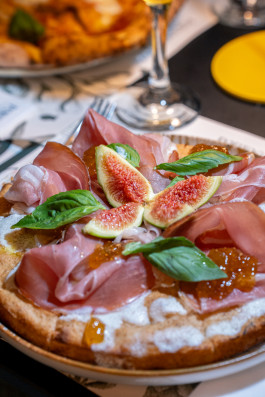
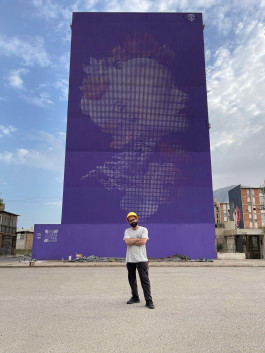
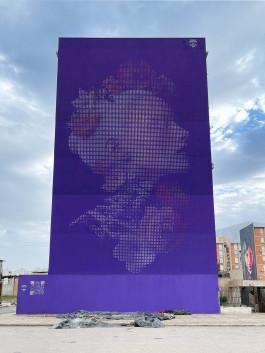
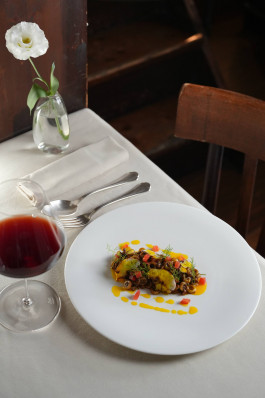
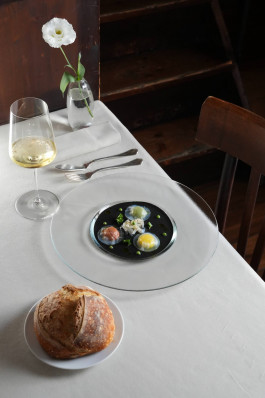
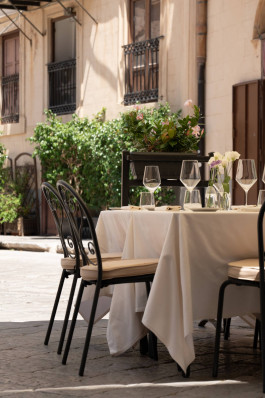
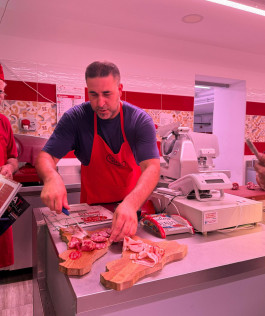
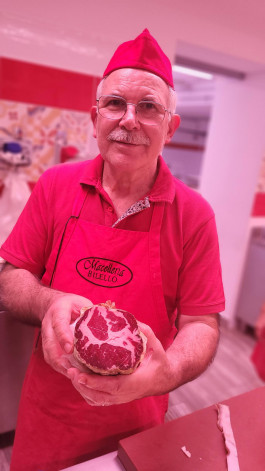
A short drive inland brings you to Piana degli Albanesi, a town with Albanian roots, its own dialect, and colorful traditions. Today it’s famous for one thing: cannoli. At Peccati di Gola, a small grocery shop with local delicatessen, the cannoli are simply unforgettable - fresh, rich, and so good they left us speechless. The recipe is a guarded family secret, kept in a safe.
But the town has more to offer. The legendary jeweler Sergio Lucito runs a family atelier steeped in history. His creations, blending Byzantine influence with Sicilian tradition, have appeared in films and carry stories of Palermo’s golden past. To step into his shop is to step into a living archive of artistry passed down for generations.
Marena, in nearby San Cipirello, specializes in organic, anti-allergen delicacies.
Salvatore Billeci’s mortadella, flavored with fennel, has been prized among Italy’s best at national competitions.
And if you’re lucky, you can book a private appointment with Maria di Stefano, who preserves the delicate art of Sicilian lace.
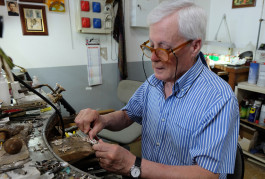
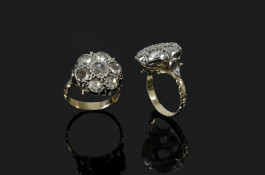
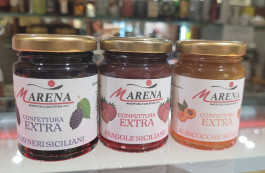
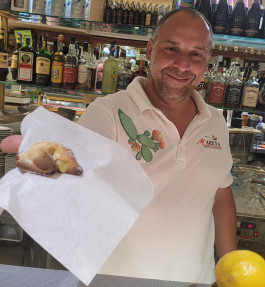
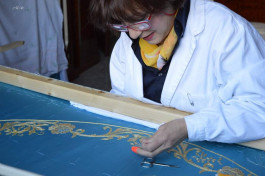
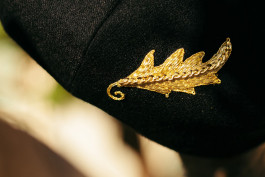
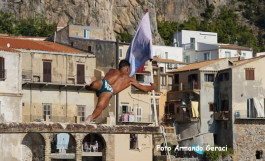
Cefalù feels like a painting: narrow lanes, sandy beaches, a towering cathedral, and a community that gathers for festivals by the sea.
In early August, during the Feast of San Salvatore, locals race on slippery sea poles before plunging into the water at midnight.
We stayed at Le Calette, a boutique hotel with panoramic views, a spa, and seafood so fresh it barely needs a squeeze of lemon.
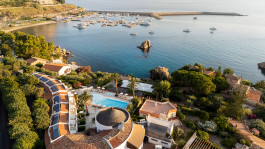
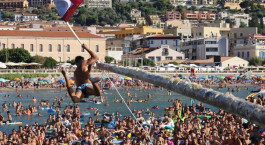
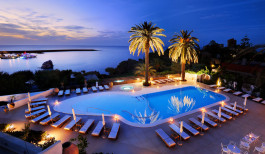
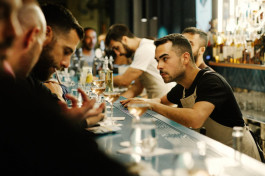
One evening we spent in an amazing place: Bastione & Costanza, perched on the town’s medieval walls. Every dinner here comes with a west-facing sunset, seafood rooted in tradition yet refined, and a wine list that rivals the best cellars. For special occasions, reserve the intimate dining room overlooking the water - just five tables, each with its own breathtaking view.
Bastione is more than a restaurant: it’s also a cultural hub, hosting exhibitions, workshops, concerts, and even yoga sessions. It’s a space where food, art, and community converge.
Later, we slipped into Neo Bar, a favorite among locals for stylish cocktails with a Sicilian twist. Its owner and bartender Gelal brings his experience from Miami, is wonderfully talkative, and has a way of lifting your mood while mixing a drink that feels like a small story in a glass.
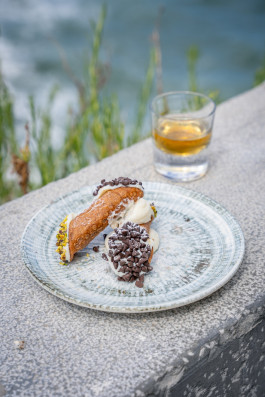
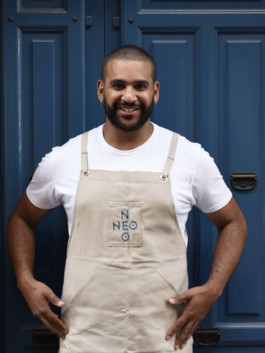
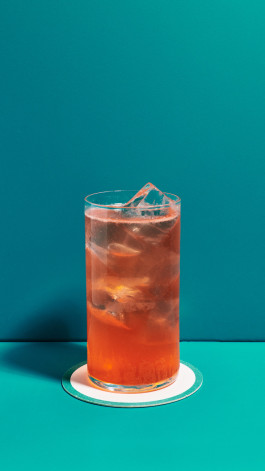
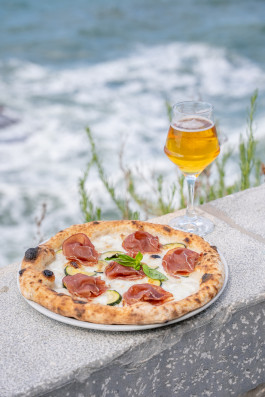
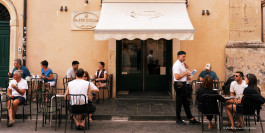
Drive east and the island softens into golden stone. Noto, alongside Modica and Ragusa, is the crown jewel of Sicilian Baroque. Its churches and palaces glow in the late afternoon sun, and every staircase leads to another perfect piazza.
Start the day at Caffè Sicilia, a true institution run by master pastry chef Corrado Assenza. Already celebrated worldwide long before Netflix featured him in Chef’s Table: Pastry, this café has become a pilgrimage for food lovers. A cappuccino, cornetto, or a brioche with granita is the real Sicilian breakfast ritual - simple, sweet, unforgettable. From there, just wander. The magic lies not in a single place, but in the rhythm of streets that feel timeless.
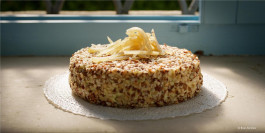
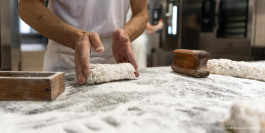
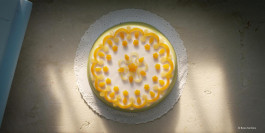
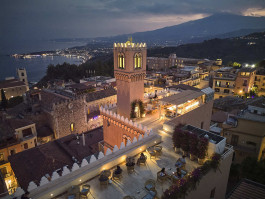
Further south lies Marzamemi, once a tuna-fishing village, now one of Sicily’s most atmospheric seaside piazzas. At Taverna La Cialoma, family recipes still shape the menu, and tables spill into the square as the sea breeze mixes with laughter and clinking glasses.
No place captures Sicily’s glamorous side like Taormina. Perched on a cliff with Etna behind and the sea below, it has been a magnet for travelers for over a century.
We stayed at Palazzo Vecchio Taormina, right in the vibrant city center. Perfect if you want evenings filled with bars, boutiques, and energy. Its terrace and bar are among the loveliest for a drink at sunset, and breakfast is served in the restaurant. For dinner, reservations are essential - tables are few and highly sought after. Palazzo Vecchio describes itself as a modern stop on the Grand Tour, recreating the spirit of historic Sicilian houses with vintage details, an Orangerie, and even a candlelit bar at night.
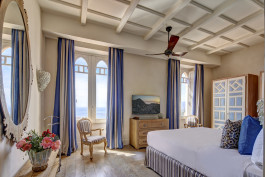
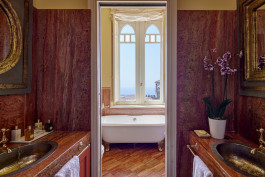
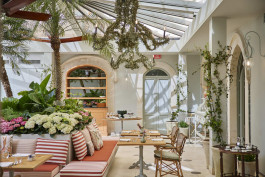
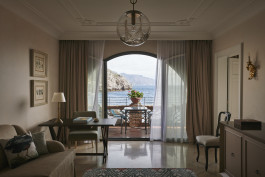
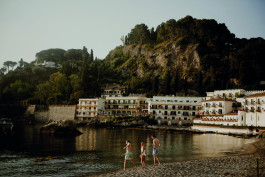
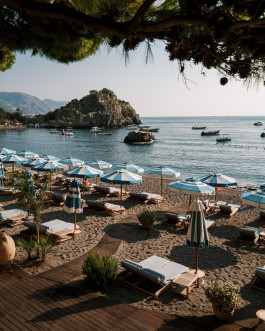
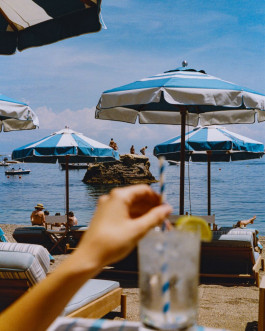
For the sea, Belmond Villa Sant’Andrea offers timeless luxury, while UNA Hotels Capotaormina, carved dramatically into the cliffs, lets you live almost above the waves.
Evenings here often start or end at Morgana Bar, a universe of its own with lush courtyards, themed interiors, and cocktails as elaborate as jewelry. The White Lotus series may have given Taormina fresh global fame, but Morgana has long been the stage for its own stories with music, dancing, and nights that stretch until morning, where conversations sparkle and encounters can be unforgettable.
Right next door, Nunziatina offers a different but equally magnetic experience. Elegant yet intimate, it celebrates Sicilian flavors with a refined menu that feels modern without losing its roots. The space itself is warm and inviting, with candlelit tables and a rhythm that makes you want to linger. It’s the kind of place where a dinner can easily become the whole evening - plates arriving slowly, wine flowing, stories unfolding. Madonna herself once came here for pasta, but Nunziatina’s charm goes far beyond celebrity moments: it lies in how it transforms simple ingredients into something unforgettable.
For aperitivi and granita, Bam Bar and Turrisi Bar are essentials.
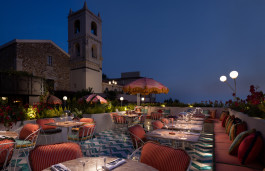
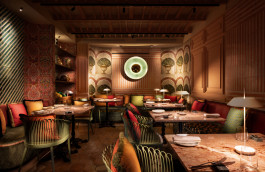
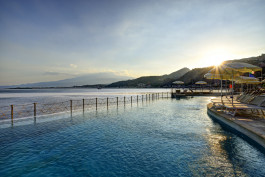
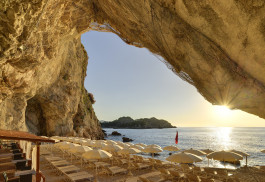
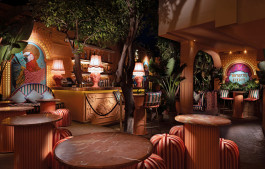
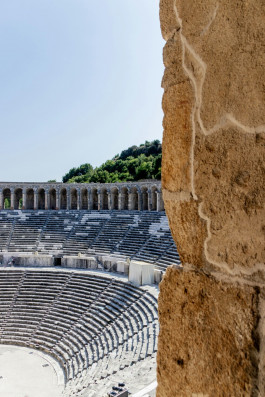
Before the sea and the bars, there’s history carved in stone. The ancient amphitheatre of Taormina — built in the 3rd century BC — opens onto one of the most cinematic views in the world: Mount Etna framed by the Ionian Sea.
Concerts and summer performances still fill its terraces, where old memories are not forgotten but reborn in sound and light. Sitting there at dusk, you feel how deeply Sicily carries its past into the present.
We didn’t make it to Catania this time, but no Sicily story is complete without it. At the foot of Etna, the city is volcanic in every sense: raw, buzzing, alive - with markets, nightlife, and vineyards just a short drive away.
Two weeks barely scratched the surface. Sicily is too vast, too diverse to capture in a single journey. What remains are not just the sights, but the contrasts: refined dinners at sunset and chaotic markets at dawn, cathedrals and hidden workshops, conversations with strangers who greet you like family.
Sicily is not one destination - it’s many. It is a doorway into other worlds. And once you step through, there’s no way back.
In cooperation with Il Made in Sicily
Download the Sicily Guide
Related Articles:

We set out to see Sicily not as tourists, but as curious travelers - trying, tasting, and talking our way across the island. The result is not a “top 10” list, but rather a story of impressions and encounters. Still, for those who want to follow in our footsteps, we’ve included a downloadable guide with all addresses at the end.
We began in Palermo, the island’s restless capital: layered, unpredictable, and alive at every corner. It’s a city that never softens itself for visitors: one moment opera, the next moment chaos, always demanding you pay attention.
Our first stop was Teatro Massimo. One of Europe’s great opera houses, it has long been Palermo’s stage to the world - from grand premieres to unforgettable film moments, from The Godfather Part III to Wim Wenders. It felt like the right doorway into our journey: a building where history, imagination, and spectacle converge.



Step outside, and Palermo shifts again: into the riot of Ballarò market. The air is thick with frying panelle and golden arancini, grilled sardines and swordfish sizzling on coals, piles of violet aubergines, artichokes, and bright blood oranges stacked high. Vendors sing out their offers in dialect, competing with the crackle of oil and the fragrance of mint, fennel, and roasted peppers. Smoke rises from open grills with sardines, swordfish, and for the adventurous - skewers of stigghiola, while counters glisten with octopus salads brightened by lemon and oil. This is Palermo at its most alive - a place where you eat with all five senses at once.
Down at the port, Palermo shows its modern side. The trapezoidal pier, designed by architect Sebastiano Provenzano, is a symbol of renewal. Once an industrial edge, it has been opened up as a place to walk, breathe in the sea air, and see the city from a new perspective.




Here you’ll find Porto di Costanza, the latest project of the Costanza Filiera del Gusto collective. More than a restaurant, it’s a food philosophy: Sicilian products reimagined, paired with thoughtful wines, in a space that feels like part of the city’s rebirth. The menu changes with the rhythm of the sea and the market, highlighting small producers and forgotten traditions. It’s a place where you can taste Palermo’s future without losing its past - contemporary in style, but deeply rooted in territory. Sitting at one of the waterfront tables, with ships moving slowly behind you, you feel both in the middle of the city and at the edge of the world.
Palermo is also about hidden corners. In Sperone, a working-class neighborhood, murals have turned the streets into an open-air gallery. We were drawn especially to the eccentric works of Angelo (“Crazy One”), whose raw colors and playful visions capture the spirit of the area. In a quiet piazza, ceramic artist Veronica Mancuso shapes clay into contemporary pieces that carry tradition into the future. And tucked into the historic center, Osteria dei Vespri defines Palermo dining: creative Sicilian cuisine, a deep wine list, and a setting so inviting that you may linger far longer than planned.











A short drive inland brings you to Piana degli Albanesi, a town with Albanian roots, its own dialect, and colorful traditions. Today it’s famous for one thing: cannoli. At Peccati di Gola, a small grocery shop with local delicatessen, the cannoli are simply unforgettable - fresh, rich, and so good they left us speechless. The recipe is a guarded family secret, kept in a safe.
But the town has more to offer. The legendary jeweler Sergio Lucito runs a family atelier steeped in history. His creations, blending Byzantine influence with Sicilian tradition, have appeared in films and carry stories of Palermo’s golden past. To step into his shop is to step into a living archive of artistry passed down for generations.
Marena, in nearby San Cipirello, specializes in organic, anti-allergen delicacies.
Salvatore Billeci’s mortadella, flavored with fennel, has been prized among Italy’s best at national competitions.
And if you’re lucky, you can book a private appointment with Maria di Stefano, who preserves the delicate art of Sicilian lace.








Cefalù feels like a painting: narrow lanes, sandy beaches, a towering cathedral, and a community that gathers for festivals by the sea.
In early August, during the Feast of San Salvatore, locals race on slippery sea poles before plunging into the water at midnight.
We stayed at Le Calette, a boutique hotel with panoramic views, a spa, and seafood so fresh it barely needs a squeeze of lemon.




One evening we spent in an amazing place: Bastione & Costanza, perched on the town’s medieval walls. Every dinner here comes with a west-facing sunset, seafood rooted in tradition yet refined, and a wine list that rivals the best cellars. For special occasions, reserve the intimate dining room overlooking the water - just five tables, each with its own breathtaking view.
Bastione is more than a restaurant: it’s also a cultural hub, hosting exhibitions, workshops, concerts, and even yoga sessions. It’s a space where food, art, and community converge.
Later, we slipped into Neo Bar, a favorite among locals for stylish cocktails with a Sicilian twist. Its owner and bartender Gelal brings his experience from Miami, is wonderfully talkative, and has a way of lifting your mood while mixing a drink that feels like a small story in a glass.





Drive east and the island softens into golden stone. Noto, alongside Modica and Ragusa, is the crown jewel of Sicilian Baroque. Its churches and palaces glow in the late afternoon sun, and every staircase leads to another perfect piazza.
Start the day at Caffè Sicilia, a true institution run by master pastry chef Corrado Assenza. Already celebrated worldwide long before Netflix featured him in Chef’s Table: Pastry, this café has become a pilgrimage for food lovers. A cappuccino, cornetto, or a brioche with granita is the real Sicilian breakfast ritual - simple, sweet, unforgettable. From there, just wander. The magic lies not in a single place, but in the rhythm of streets that feel timeless.




Further south lies Marzamemi, once a tuna-fishing village, now one of Sicily’s most atmospheric seaside piazzas. At Taverna La Cialoma, family recipes still shape the menu, and tables spill into the square as the sea breeze mixes with laughter and clinking glasses.
No place captures Sicily’s glamorous side like Taormina. Perched on a cliff with Etna behind and the sea below, it has been a magnet for travelers for over a century.
We stayed at Palazzo Vecchio Taormina, right in the vibrant city center. Perfect if you want evenings filled with bars, boutiques, and energy. Its terrace and bar are among the loveliest for a drink at sunset, and breakfast is served in the restaurant. For dinner, reservations are essential - tables are few and highly sought after. Palazzo Vecchio describes itself as a modern stop on the Grand Tour, recreating the spirit of historic Sicilian houses with vintage details, an Orangerie, and even a candlelit bar at night.




For the sea, Belmond Villa Sant’Andrea offers timeless luxury, while UNA Hotels Capotaormina, carved dramatically into the cliffs, lets you live almost above the waves.
Evenings here often start or end at Morgana Bar, a universe of its own with lush courtyards, themed interiors, and cocktails as elaborate as jewelry. The White Lotus series may have given Taormina fresh global fame, but Morgana has long been the stage for its own stories with music, dancing, and nights that stretch until morning, where conversations sparkle and encounters can be unforgettable.
Right next door, Nunziatina offers a different but equally magnetic experience. Elegant yet intimate, it celebrates Sicilian flavors with a refined menu that feels modern without losing its roots. The space itself is warm and inviting, with candlelit tables and a rhythm that makes you want to linger. It’s the kind of place where a dinner can easily become the whole evening - plates arriving slowly, wine flowing, stories unfolding. Madonna herself once came here for pasta, but Nunziatina’s charm goes far beyond celebrity moments: it lies in how it transforms simple ingredients into something unforgettable.
For aperitivi and granita, Bam Bar and Turrisi Bar are essentials.










Before the sea and the bars, there’s history carved in stone. The ancient amphitheatre of Taormina — built in the 3rd century BC — opens onto one of the most cinematic views in the world: Mount Etna framed by the Ionian Sea.
Concerts and summer performances still fill its terraces, where old memories are not forgotten but reborn in sound and light. Sitting there at dusk, you feel how deeply Sicily carries its past into the present.
We didn’t make it to Catania this time, but no Sicily story is complete without it. At the foot of Etna, the city is volcanic in every sense: raw, buzzing, alive - with markets, nightlife, and vineyards just a short drive away.
Two weeks barely scratched the surface. Sicily is too vast, too diverse to capture in a single journey. What remains are not just the sights, but the contrasts: refined dinners at sunset and chaotic markets at dawn, cathedrals and hidden workshops, conversations with strangers who greet you like family.
Sicily is not one destination - it’s many. It is a doorway into other worlds. And once you step through, there’s no way back.
In cooperation with Il Made in Sicily
Related Articles:
You need to load content from reCAPTCHA to submit the form. Please note that doing so will share data with third-party providers.
More InformationYou need to load content from Turnstile to submit the form. Please note that doing so will share data with third-party providers.
More InformationYou are currently viewing a placeholder content from Facebook. To access the actual content, click the button below. Please note that doing so will share data with third-party providers.
More InformationYou are currently viewing a placeholder content from Instagram. To access the actual content, click the button below. Please note that doing so will share data with third-party providers.
More InformationYou need to load content from hCaptcha to submit the form. Please note that doing so will share data with third-party providers.
More InformationYou need to load content from reCAPTCHA to submit the form. Please note that doing so will share data with third-party providers.
More InformationYou are currently viewing a placeholder content from Turnstile. To access the actual content, click the button below. Please note that doing so will share data with third-party providers.
More InformationYou are currently viewing a placeholder content from X. To access the actual content, click the button below. Please note that doing so will share data with third-party providers.
More Information